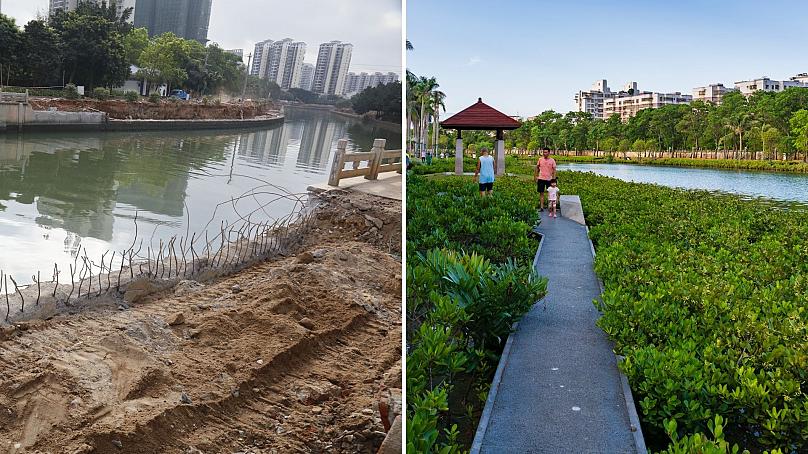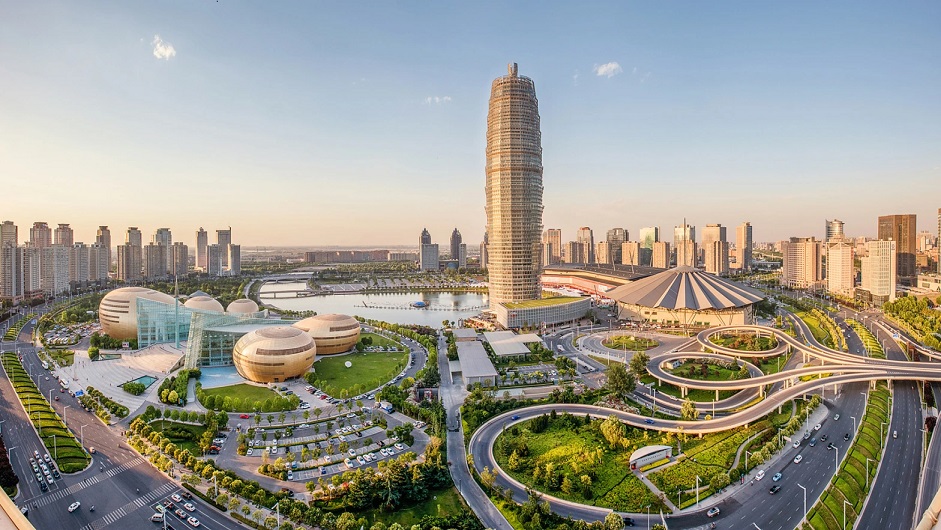The scorching heat of summers is becoming unbearable, year after year. This is true for Northern and North-Western India. It is predicted that this summer will have the highest temperatures in the weather recording history. Come monsoon, many cities get submerged in flash floods. Every year we talk of water shortages, air pollution, flooding and potholed roads. Power shortages are rampant and fires in forests and slums are frequently reported. Water harvesting is envisaged but implementation is slow. All this causes lesser production of goods and farm produce, inflation and a feeling of insecurity and helplessness.
So, let’s see why this is happening in cities. There is haphazard growth of cities with islands of slums. Developers and builders of townships or single houses levelled the ground flat and filled all water bodies with earth and concrete before construction. Also, in the last 30 years or so, our elected representatives have been spending thousands of crores of rupees on ‘development’. Most of these funds have again gone to builders/ contractors who made footpaths, car parks, exercise areas, huge gates and even artificial ponds – all constructed with impervious concrete.
This concrete absorbs sun rays and in turn, emits heat in the evenings and night besides not allowing rainwater to percolate into the soil. Due to climate change, rainfall is usually torrential. The rainwater falling in the cities runs off in sewer lines and is mixed with chemicals from industries and pollutants from shopping areas. Old trees are cut for buildings and roads and the newly planted trees take a long gestational period to give tangible benefits.
‘Sponge City’ Concept
Can we not have a giant sponge which absorbs the unpolluted rainwater in monsoons and emits water vapours in summers to cool the environment! Miracle! Unlikely by God but highly likely by humans.
‘Sponge City’ is a new model for strengthening ecological infrastructure and drainage system which results in less flooding and fewer hot days besides providing better quality water in periods of drought.
In fact, many cities of the world are trying hard and are being called, ‘SPONGE CITIES’. Shouldn’t India give it a try?

Major Issues
Let me first enumerate the major issues causing our cities to overheat and flood in different seasons. Most issues listed below go against nature’s way of soaking the city’s water in the soil.
- Flattening the terrain and altering course/ filling up natural water bodies.
- Laying of impervious materials like concrete and asphalt on grassy paths, small parks and other open spaces.
- The local variety of trees being cut and exotic, flower-bearing trees planted.
- Lack of proper water drainage network. Faulty layout and frequent blockage of drains due to city rubbish being thrown haphazardly.
- Construction of huge concrete structures in the name of development.
- Paying lip service to water harvesting schemes.
Can the Model Work in India?
Time is running out for global warming. Climate change has already taken place. Educated people including children are aware and concerned. However, our elected members have become hard-core, professional politicians who only look to winning the next election.
Yet the fact remains that our cities need to be made more water permeable, let’s see how.
- Creation of sponge areas which are actually green patches with trees or bushes or grass. This may be in the soil on earth or on large terraces of buildings. This will allow rainwater to filter the soil and reach underground aquifers.
- Water can be extracted from these aquifers by the cities when required.
- On the ground, large green areas are required to be connected to each other with narrow green corridors.
- Green areas may be large parks without concrete walkways and urban forests. Small or tiny forests can come up in enclosed disputed sites or municipal areas for which funds are not available for construction. The undergrowth from these forests serves as a sponge, and hence should never be removed.
- Large malls or commercial areas in cities need to include Solar panels cum garden restaurants on their roofs. Such ‘Sponge roofs’ can also come on top of large school buildings and hotels.
- Car parks are to be made with interlocking tiles where water can be soaked into the soil. Trees are planted all around and in between.
- Housing colonies to have similar sponge rooftops where recreational/ cultural activities can be conducted. Water harvesting is implemented in Toto.
- Rather than just holding flower shows, cities can also hold competitions for mini forests and rooftop sponge areas.
- Cities next to rivers and seas must also strive for dense tree plantations along the banks for the conservation of soil. Water bodies must be protected from sewerage and other pollutants.
- The concept will work efficiently only if garbage disposal by the public and collection by the municipal authorities improves considerably.
To summarise, this model must support the city’s ecosystem and biodiversity with recreational and cultural centres. Only then these can be resilient and sustainable.

How Can Sponge City Model be Delivered?
There are three issues in its delivery in India. The first is funds, the second is awareness and training of concerned officials & employees of the City and the third is participation from the general public.
The present government has announced the Amrit Sarovar scheme 75 on 24th April 2022. This scheme aims to rehabilitate 75 ponds in various villages of the country by our 75th independence day. The long term aim is for 1000 pounds, at least one in each district. With this scheme, the intention of the government is clear as far as rural areas are concerned. Clearance and rejuvenation of ponds are presently being done by motivated youth, an earlier blog on this platform may be read if you are interested. (Cleaning up neighbourhood ponds)
As far as cities are concerned, Chennai and Mumbai (BMC) have also declared to adopt the Sponge city concept with modifications depending on their environmental conditions. Funds are available in the Government’s coffers from the following schemes:-
- AMRUT – Atal’s Mission for Rejuvenation and Urban Transformation.
- HRIDAY- National Heritage City Development and Argumentation Yojana.
- Smart Cities Mission.
As educated and aware citizens, it is our duty to divert the attention of our elected members and officials to this important issue. Else our children will smoulder in heat or drown in floods. Time has already run out. Climate change is real. Our globe is not just warm, it is hot. Thousands will die and lakhs will starve this year because of extreme heat. Destiny will blame our generation for destroying nature. Let us pledge to try and do whatever we can to slow down earth’s journey on this path to destruction.
Title image courtesy:https://news.cgtn.com/news/2021-06-03/
Disclaimer: The views and opinions expressed by the author do not necessarily reflect the views of the Government of India and Defence Research and Studies
Article Courtesy: https://genkris.wordpress.com








